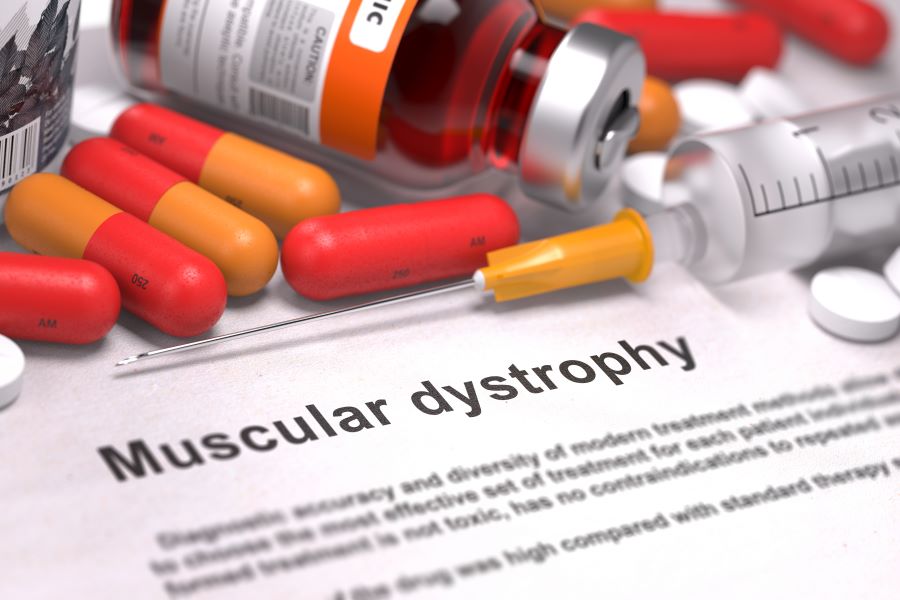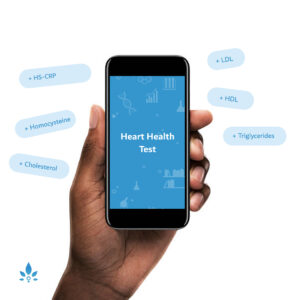What is Muscular Dystrophy?


Muscular dystrophy is a group of diseases in which the muscles of the body are slowly broken down over time due to a faulty gene. The muscles become weak as the disease progresses, so mild muscle weakness slowly evolves to include even the muscles of the respiratory system as well as the heart. Muscular dystrophy is genetic, meaning that it is passed down from parent to child by their genes. It cannot be ‘caught’ like the common cold. Unfortunately, a parent can be a carrier of the gene, meaning they have no idea they could pass it along to their child until their child is diagnosed.
Doctors characterize many muscular dystrophy types by the affected limbs. They will consider where the symptoms began in the body. Infants can present with muscular dystrophy, but it’s not uncommon for muscular dystrophy to be diagnosed during childhood or even the teen years. Even though the cause is genetic, the expression of the disease is delayed, sometimes for years.
Duchenne Muscular Dystrophy (DMD) is the most common muscular dystrophy type. DMD is passed on by the mother but affects males only and causes progressive weakness in almost all parts of the body, including the arms, legs, brain, throat, and stomach. Doctors typically diagnose DMD before age 5 when caregivers begin to notice that a previously normal child is having difficulty running, jumping, and doing activities that were once easy. Additional symptoms of DMD include:
- Frequent falls
- Larger-than-normal calf muscles
- Trouble climbing the stairs
Using the “Gower’s maneuver” to progress from a seated to standing position. A child will start out on his hands and feet before pushing up with his bottom. To come to a full standing position, he will often “walk” his hands up his legs.
Waddling gait
Nine major muscular dystrophy types exist. Along with DMD, these include:
- Becker (BMD): This condition affects males only and has similar symptoms to Duchenne muscular dystrophy. However, the symptoms tend to be milder and progress more slowly, causing weakness in the hips, pelvis, thighs, and shoulders.
- Congenital (CMD) and Myopathies: The condition is typically present at birth or in a child’s first months of life. The condition affects both males and females and causes initial weakness in the neck, trunk, and legs followed by weakness in the heart, chest muscles, nerves, and spine. Symptoms can range from moderate to severe.
- Distal (DD): This condition affects males and females in equal numbers and typically affects the lower arms, lower legs, and feet first.
- Duchenne (DMD): These conditions affect males only and cause progressive weakness in almost all parts of the body, including the arms, legs, brain, throat, and stomach. Doctors typically diagnose DMD before age 5.
- Emery-Dreifuss (EDMD): Only males are affected in this rare muscular dystrophy form that typically causes weakness in males ages 5-15 years old.
- Facioscapulohumeral (FSH): This condition typically occurs by age 20 with its onset in the teenage years. Both males and females are equally affected, with symptoms typically beginning in the face, shoulders, lower legs, and upper arms. Young people with this condition typically have shoulder blades that protrude when a person raises his or her arms.
- Limb-Girdle (LGMD): This disease equally affects men and women, which typically causes initial weakness in the shoulders and hips.
- Myotonic (MMD): This condition affects males and females, causing weakness in the face, arms, hands, and lower legs. The condition can occur at virtually any age, but doctors most commonly diagnose it between the ages of 10 and 30 years old.
- Oculopharyngeal (OPMD): This rare adult-onset condition affects males and females equally. The condition typically causes weakness that begins with eyelid drooping and can progress to difficulty swallowing.
Children with muscular dystrophy may also exhibit decreased endurance and become easily fatigued. If parents notice any of the above symptoms, they should contact the child’s pediatrician.
Sources:
- American Academy of Orthopaedic Surgeons
- Muscular Dystrophy.
Centers for Disease Control and Prevention - Facts About Muscular Dystrophy
Cleveland Clinic: Muscular Dystrophy.
Muscular Dystrophy Association - Duchenne Muscular Dystrophy.
MayoClinic.com - Muscular Dystrophy.
National Institute of Neurological Disorders and Stroke - What Is Muscular Dystrophy?
Powered by Bundoo®












































